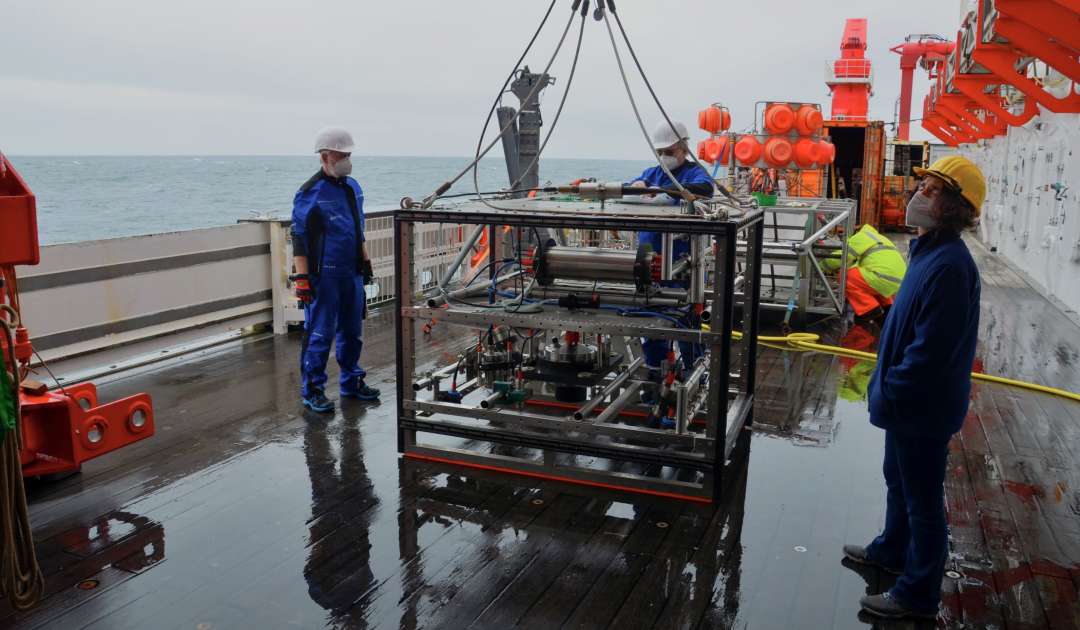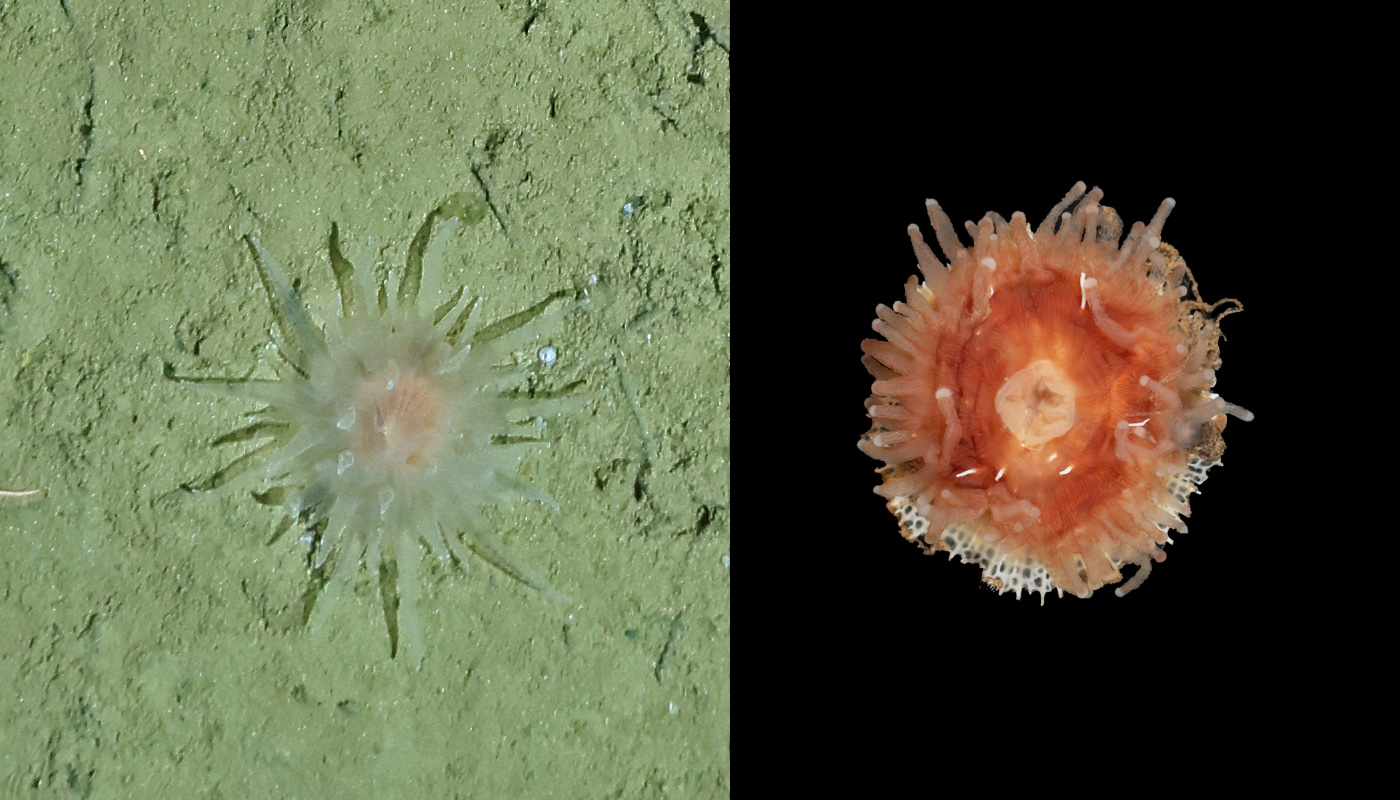Peering into the abyss
When biologists study deep sea animals, mostly we don’t get to see them in their natural habitat. We work from specimens that are carefully collected and preserved.
In previous blog posts for this cruise, the team has written about some of the different types of equipment that we use to sample the deep sea. But on the RV Sonne we also have a way to see the seafloor – live and in colour – a camera system called an Ocean Floor Observation System (OFOS). More technical details will come in a later post, but the OFOS has HD video and still-frame cameras and huge flash lights, mounted on a steel frame, facing directly downward. The cameras are connected to the computer by a fibre optic cable so that the images are brought back to the ship in real time, travelling the several kilometres from the seafloor to the surface. This is a rare opportunity to watch what is happening in our favourite habitat, in the areas we are sampling.
Watching the OFOS videos helps us to understand our samples, and sometimes we can even make side by side comparisons with the species we successfully collect. We can even see the trails that they make in the mud (Figure 1). And even delicate species can sometimes be recovered in good condition (Figure 2). But what is more interesting, are the many times that different collecting methods don’t match up. We see things in the OFOS that never appear in our nets, like delicate solitary hydroids, or animals that leave trails and burrows on the sea floor. And we collect many things with our sampling gear that are invisible on the OFOS, such as the small crustacean species that are so critical to understand the biodiversity of these habitats.
The mismatches between different gear types are partly a matter of luck – you always have to be lucky to observe species that are rare – and partly the different limitations of each method of sampling. The OFOS has incredible resolution, but it has limits, animals often hide away beneath the mud or may flee from the bright lights. Images are very often not enough for us to identify species; we need to see extremely small details to separate similar-looking species. When we deploy sampling gear that brings back physical specimens from the seabed, we cannot see exactly where it lands or what it is collecting until it returns, and then it has to journey several kilometres up through the water to reach the ship. For all of these reasons, we have to use a mixture of sampling approaches to really understand the biodiversity of the deep sea. What we see in images is not the whole picture.
On AleutBio we can deploy the OFOS at all but the deepest stations. Whenever we are able to bring the scientists together, many experts sit in our meeting room and watch the footage from the seafloor and collaborate to identify as many species as possible as we see them. Watch parties are happy occasions, a rare treat for us to get to visit our favourite species at home and see these beautiful and strange species we love.
Dr. Julia Sigwart


